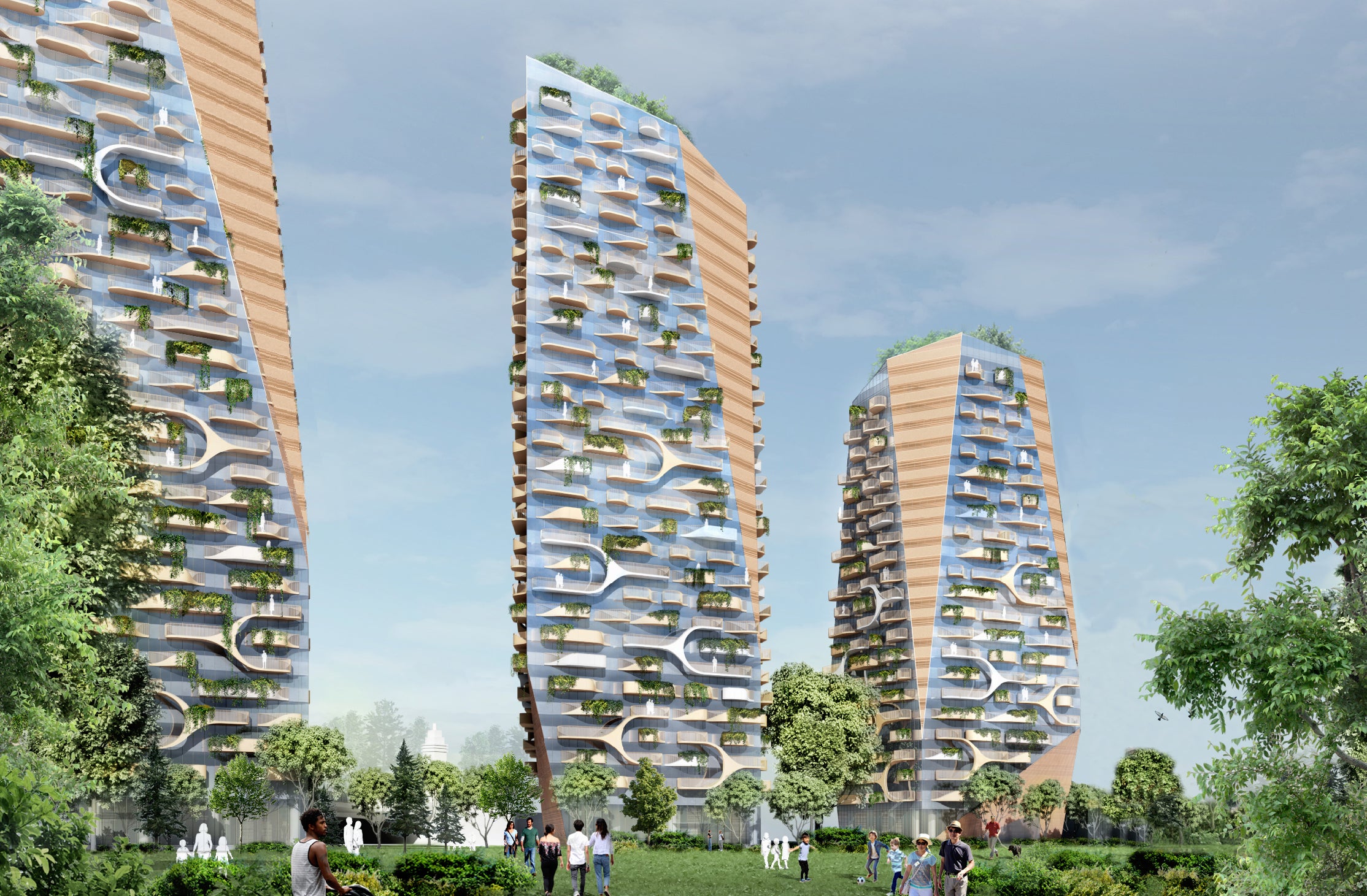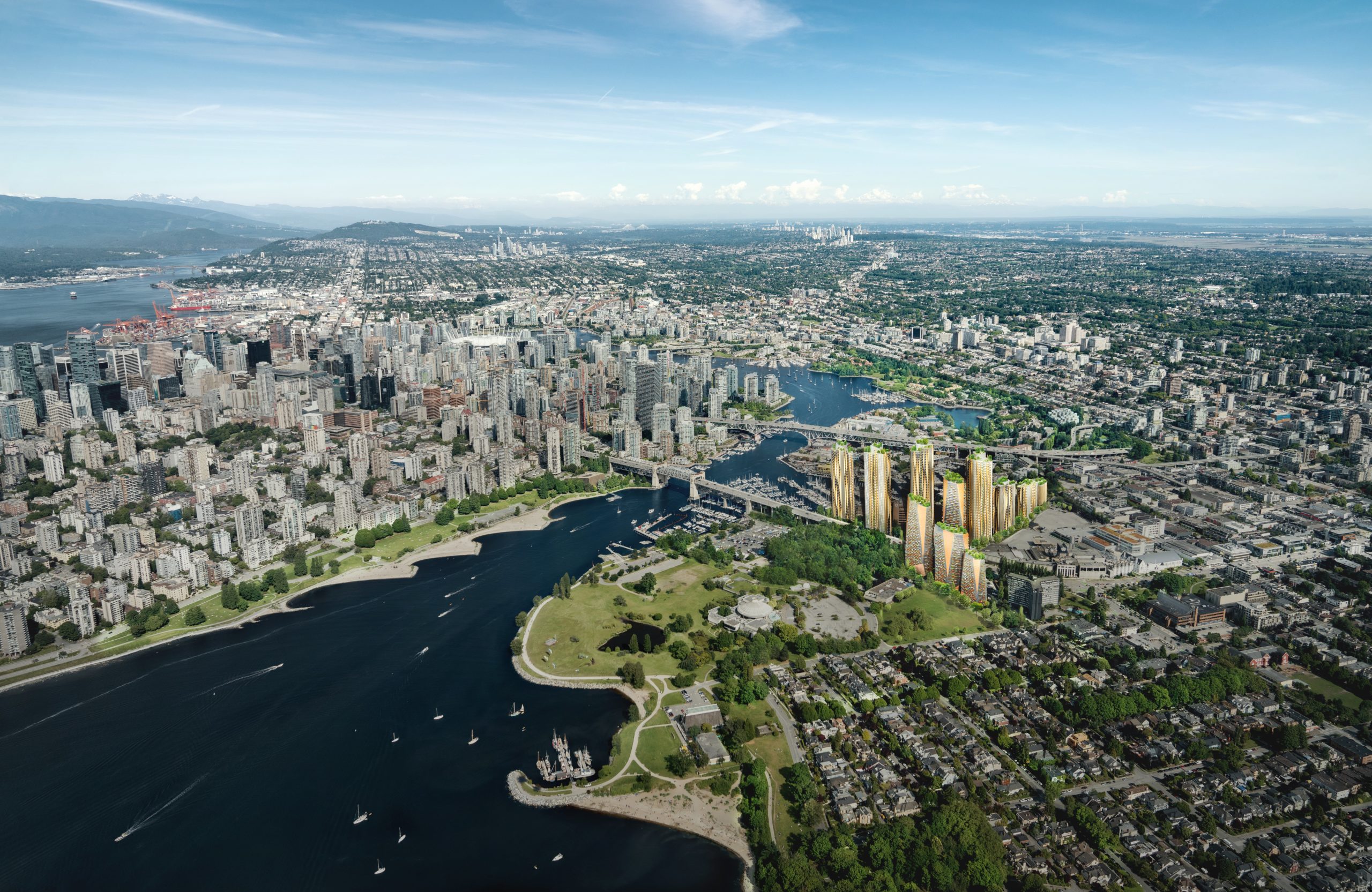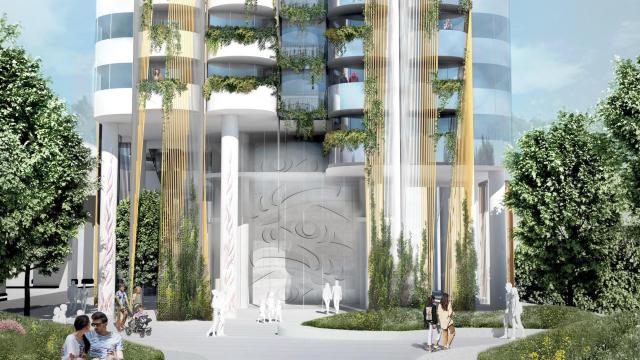A stretch of land controlled by the Squamish Nation in Vancouver will soon be home to a beautiful, green high-rise. The 11-tower development, called Sen̓áḵw, will include 6,000 new housing units, most of which will be rentals, including several hundred set aside for tribe members. Last year, 87% of the nation voted in favour of the project.
If you already know about this, it’s probably because of a tweet about it that recently went viral. The design attracted lots of praise and people wishing they could live there. But the rest of us don’t have to simply admire the A$3 billion project and daydream. Green public housing where people want to live can be a reality for all of us.
Sen̓áḵw is an architectural marvel; it will sit on a 4.86 ha parcel of Squamish reserve land. Its name, which means “the place inside the head of False Creek,” is taken from the village that once stood there but was grabbed from the Native communities in the late 1800s and used to construct railways. In 2003, it was returned to the nation. The housing project will feature low-carbon features for heating and cooling. Revery, the architectural firm, the Squamish Nation, and the developer Westbank wrote in a joint statement the project has “aspirations of being 100% GHG-free.”
The project will also be mostly car-free. Because it’s Squamish land, the development can include 90% less parking than required by Canadian law. (Yes, there are laws requiring more parking be part of development.) The plans include a rapid-transit terminal nearby with a bike and e-bike garage to help people make more sustainable, less polluting choices.
But most importantly, it looks like a place people want to live. This project won’t be a bunch of sterile pods. It will include curved balconies teeming with greenery, large public green spaces, and commerce on the premises. It will also be decorated with Indigenous-inspired art.
“At its core, the Sen̓áḵw project aims to become a legacy for the Squamish Nation celebrating Indigenous-based values centered on nature, well being, and community while showcasing the Nation’s history and culture,” the partnership said.

The project flies in the face of old ideas of environmentalism, which paint low-carbon living as austere. The design is downright dreamy. Yet it also subverts the capitalist logic that says that only wealthy people should have eco-friendly housing because they have access to disposable capital and can afford to adopt new, clean innovations. Rather than letting the super-rich construct huge mansions outfitted with solar panels and heat pumps, this project will make green housing affordable to those who need it most, taking on the twin issues of climate justice and housing affordability at once.
“I can’t think of a more intersectional investment than putting funds into green affordable housing,” said Daniel Aldana Cohen, a sociologist at the University California, Berkeley who worked on federal legislation for a Green New Deal for Public Housing.
There are other signs that at least some corners of the design world are moving in a similar direction direction. This year, the top award for architecture in the world went to Anne Lacaton and Jean-Philippe Vassal, a pair of French architects who are known for doing gorgeous, low-carbon retrofits of public housing in Bordeaux, France, and elsewhere. And on Capitol Hill, the the House Financial Services committee put forth a plan to allocate billions of dollars for communities to create sustainable and affordable housing. Right now, that proposal might not make it into Democrats major reconciliation bill currently winding through Congress.
While the clean electricity standard (and Sen. Joe Manchin’s reported opposition to it) has received a lot of attention for cutting carbon, housing investments could offer another big avenue to reduce emissions and improve people’s quality of life. Buildings and their construction account for a combined 36% of global energy use and 39% of power-related carbon dioxide emissions. Poor households also spend more on utilities as a percentage of their income than wealthier ones. Energy efficient, lower carbon housing could be a major way to help close that gap.

The Squamish Nation project shows that housing doesn’t just have to be bare bones, though. Making sustainable housing affordable could serve to lower carbon emissions, boost equity, and create jobs while also providing ordinary people with a bit of luxury. That approach could boost support for climate proposals overall, showing that climate policies can vastly improve people’s lives.
“Massive public investments in green affordable housing would help the Democrats achieve every major objective laid out by the Biden administration,” said Aldana Cohen. “What we’re seeing in Vancouver gives us a glimpse of the architectural creativity and splendor that you could unleash in the United States, if you just put real resources on the table for communities to build innovative, green, affordable housing to meet their local needs and dreams.”
